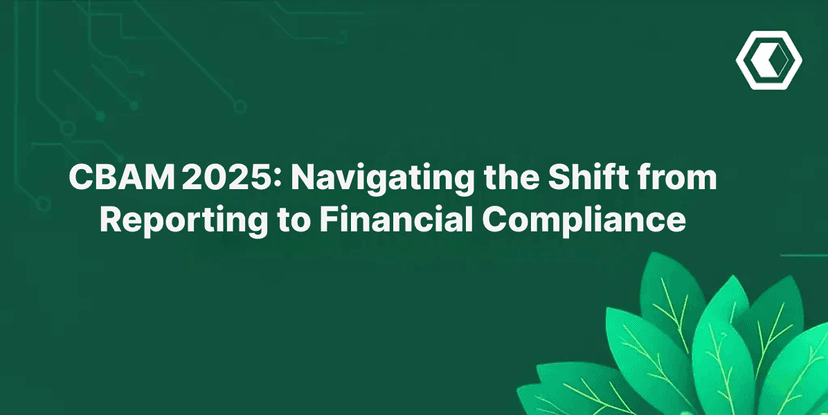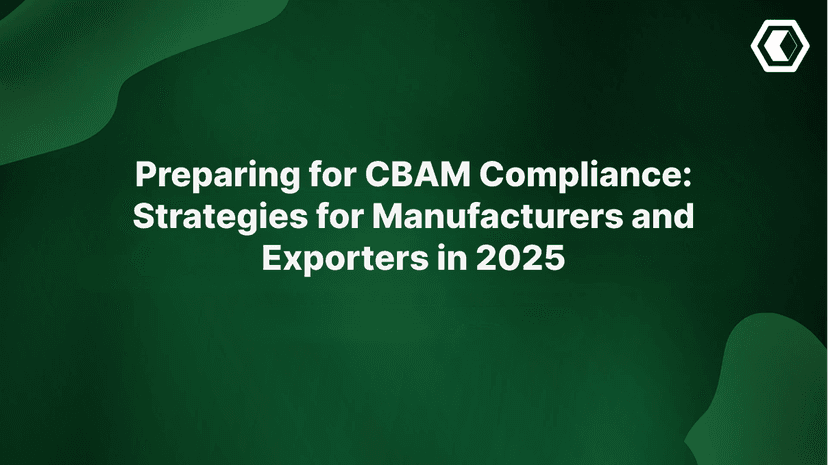Introduction
In the race toward sustainable manufacturing and Scope 3 reporting, your Bill of Materials (BOM) is your compass. Every component, every supplier, and every material attribute adds up to your company’s carbon footprint. But what happens when your BOM is outdated? Suddenly, emission factors are missing, suppliers are mismatched, and your carbon calculations collapse. An outdated BOM doesn’t just create reporting errors — it creates broken carbon footprints that regulators, investors, and stakeholders won’t trust. With new regulations such as the EU CSRD, SEC climate rules, and customer-driven supply chain transparency, this is no longer an optional fix. The good news: AI-driven enrichment can quickly transform outdated BOMs into emission-ready product data, filling gaps with accurate emission factors and enabling reliable Scope 3 calculations.
Why Outdated BOMs Lead to Broken Carbon Footprints
Supplier changes over time
Your BOM from last year may list suppliers who have since changed production processes, shifted regions, or even switched raw materials. Old data = misleading carbon footprints.
Material substitutions
Engineers often substitute materials during prototyping and production, but if those updates don’t flow into the BOM, the emissions profile is wrong from day one.
Missing or outdated emission factors
Emission factor databases evolve rapidly. A steel grade linked to a 2019 factor may now have a more accurate regionalized dataset in 2025. If you don’t update, you’re reporting the wrong numbers.
Inconsistent data formats
Different suppliers may use varying units, naming conventions, or material codes. Without normalization, outdated BOMs create gaps in matching emission factors.
Regulatory misalignment
Outdated BOMs often don’t align with the latest reporting frameworks (GHG Protocol, ISO 14067). That creates friction during audits and risks non-compliance.
The Fastest Way to Enrich Outdated BOMs with Emission Factors
BOM Data Ingestion & Normalization
AI-driven systems ingest BOMs in any format (Excel, CSV, ERP export) and normalize the data: convert units, standardize headers, and harmonize naming conventions.
Material Mapping with Semantic AI
Using NLP, AI maps supplier-given material descriptions to canonical categories. For example: 'PC-ABS resin black' → Polycarbonate/ABS blend; 'Stainless steel AISI 304' → Steel / 304 grade.
Emission Factor Matching
AI automatically links each material or process to the most accurate emission factor available, using sources like GHG Protocol, ecoinvent, EPDs, and proprietary libraries.
Gap-Filling & Smart Imputation
For missing data, AI uses similarity-based estimation, Bayesian inference, and supplier enrichment to prevent gaps from leaving 'holes' in your Scope 3 footprint.
Continuous Updates with Feedback Loops
Each supplier update, new EPD, or regulatory change is integrated automatically, turning BOMs into living documents always synced with the latest emission data.
Business Benefits of Enriching BOMs with AI
Reliable Scope 3 Reporting
Updated emission factors ensure reports are audit-ready and aligned with GHG Protocol, ISO, and CSRD standards.
Time & Cost Savings
Manual data cleaning and enrichment take weeks. AI does it in minutes, freeing sustainability teams to focus on strategy.
Supplier Collaboration
Smart enrichment highlights data gaps and automatically engages suppliers, reducing back-and-forth emails.
Hotspot Identification
Enriched BOMs reveal which components drive the highest carbon impact, enabling smarter redesign or sourcing decisions.
Competitive Advantage
Companies that maintain real-time, emission-enriched BOMs win customer trust and stay ahead of compliance deadlines.
Real-World Example
Imagine a consumer electronics manufacturer working with an outdated BOM from 2022. It lists 'Plastic – General' for several casing components. The AI enrichment system detects this vague entry. Using semantic analysis, it classifies the material as 'Polycarbonate (PC)' based on part application and supplier history. It then matches the entry to the latest regionalized emission factor from 2025, with a 90% confidence score, flagged for optional supplier validation. Result: Instead of 'Plastic – General, 2018 emission factor,' the updated BOM now has 'Polycarbonate, PC, Asia, 2025 emission factor,' producing a far more accurate footprint.
Challenges and How to Overcome Them
Stakeholders may question inferred data. → Mitigation: provide confidence scores and audit trails.
Multi-tier suppliers are hard to map. → Mitigation: use network AI to infer upstream processes.
Standards keep changing. → Mitigation: integrate auto-update systems aligned with GHG Protocol and ISO.
SEO Optimization & Keywords
To help your site rank across Google and AI search engines like ChatGPT, Gemini, Claude, and Perplexity, this article embeds relevant keywords such as: Outdated BOMs, BOM enrichment with emission factors, Reliable Scope 3 reporting, AI in carbon accounting, Supplier data enrichment, GHG Protocol compliance, Scope 3 footprint accuracy, and Sustainability data automation.
Conclusion
Outdated BOMs break carbon footprints — and broken footprints create compliance risk, reporting delays, and credibility loss. The fastest way forward is to enrich BOMs with updated emission factors using AI. By normalizing data, mapping materials, auto-filling gaps, and continuously updating, organizations can transform static, outdated BOMs into dynamic carbon intelligence engines. For enterprises navigating complex supply chains and ambitious Scope 3 targets, AI-driven enrichment isn’t just a tool — it’s the only way to stay accurate, compliant, and future-ready.


